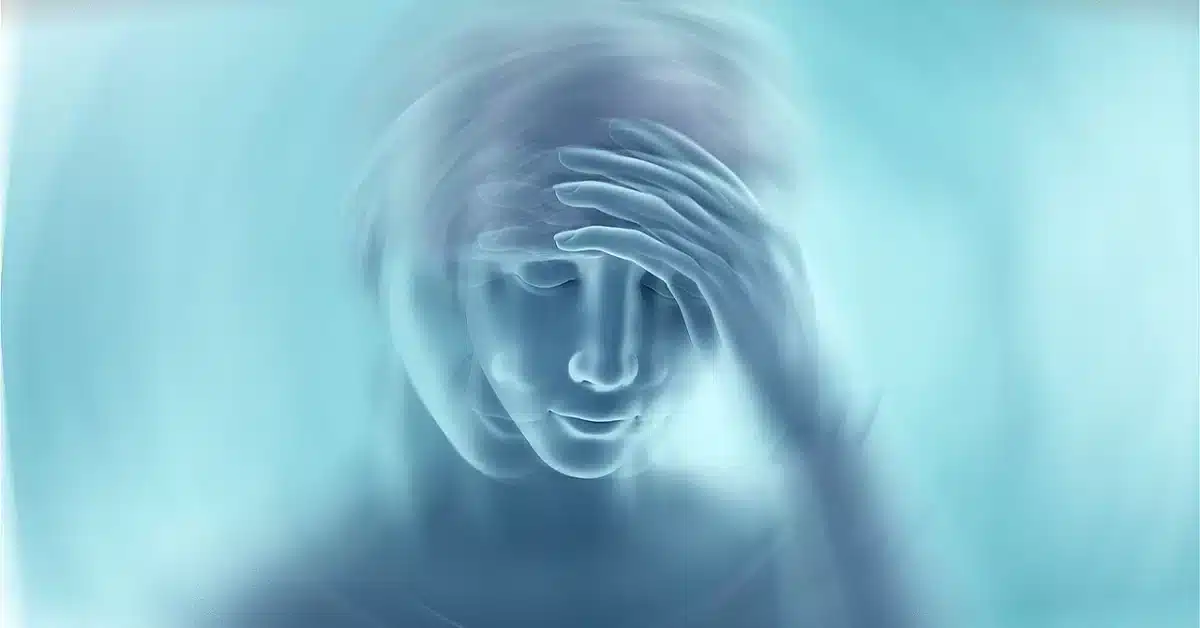Eye Strain Vertigo: All You Need to Know
Do you ever feel dizzy or off-balance after staring at a computer or phone screen for a while?
If so, you may be experiencing Vertigo caused by eye strain.
According to the Kaiser Family Foundation, kids of age 8 to 18 spends 7.5 hours on screen.
Out of that, 4.5 hours are spent watching TV. This adds up to 114 full days watching screens.
This can lead to a range of uncomfortable symptoms, including headaches, blurred and double vision.
Vertigo is dizziness indicated by a feeling of spinning or whirling, which can indicate an underlying condition.
In this article, we will explore the causes and symptoms of Vertigo from eye strain and strategies for preventing and managing this condition.
We’ll also discuss when to seek medical attention if you experience dizziness or other symptoms of eye strain.
Eye Strain Vertigo Symptoms
A person who feels Vertigo, i.e., dizziness or double visions, may experience the following other symptoms:
- Spinning sensation
- Feeling faint
- Fear of falling
- Blurry vision
- Headache
- Disorientation
- Light sensitivity
What problems can cause Vertigo?

Vertigo can result from vision problems because the visual system can influence the vestibular system.
The following vision-related issues may bring on Vertigo:
Eyestrain
You can have eye strain using digital devices such as mobile phones or computer screens.
Long-term use of a digital gadget causes the eye muscles to attempt to adjust, which can constantly cause Vertigo.
Nystagmus
Nystagmus is when the eyes involuntarily move up and down, side to side, or in circular motions.
This can cause dizziness, motion sickness or vertigo.
It can be due to different brain conditions, such as multiple sclerosis.
Bifocal lenses
Sometimes, bifocal lenses may lead to Vertigo. When you wear this lens, your eye has to adjust to different powers while they move around.
This can cause Vertigo in some people when they remove lenses because they get used to them.
Treatment
Vertigo can sometimes be hard to treat. Some of the possible treatments for Vertigo include the following:
Correcting misalignment problems
If you have an eye misalignment problem, your doctor may prescribe you prism glasses.
These glasses help correct eye problems and reduce dizziness.
Lifestyle changes
Several lifestyle changes can also help in preventing and treating Vertigo.
If Vertigo is caused due to excessive use of a computer, you can limit your screen time.
You can use computer glasses when using digital screens.
This will help in blocking the harmful blue lights coming from the screen.
Medication
When the cause of Vertigo cannot be treated or determined, medicine to relieve symptoms may help.
Medications can help improve the functioning of the eye but cannot correct the problem causing dizziness.
These medications may include antihistamines and antiemetics.
Some of the antihistamines available over the counter are as follows:
- Clemastine (Tavist)
- Diphenhydramine (Benadryl)
- Brompheniramine (Dimetane)
Surgery
When the medications and treating other problems don’t work.
Then, surgery to correct the problem with the inner eye may be the only option.
Home remedies
You can treat Vertigo from eye strain by following some home remedies.
Some home remedies are as follows:
Getting rest
Vertigo can be caused due to eye strain, as we use our eyes to perform every task.
Some tasks like working on a computer or reading small texts can cause more strain on the eyes.
Take regular breaks while working on computer screens or reading newspapers and magazines.
20-20-20 rule
Following the 20-20-20 rule can also help in preventing dizziness caused due to sitting for longer times.
This rule involves looking at an object 20 feet away for 20 seconds after every 20 minutes.
This will help in adjusting the focus of the eye’s lens while using screens.
Epley maneuver
This exercise treats a type of Vertigo called Benign Paroxysmal Positional Vertigo (BPPV).
To perform this exercise, you can follow the following steps:
- Turn your head to the side that is causing Vertigo
- It would help if you quickly lay on your back with your head still slightly off the table’s edge
- At this point, your Vertigo symptoms may probably get worse over few time
- Turn your head slowly to the other side
- Turn your body so that it is in line with your head
- You will be lying on your side with your head and body facing the side
- Sit up straight
Also Read: You can go through the article, A Clearer View: 7 Best Eye Exercises For Vertigo.
Drinking Water

Dehydration can also cause a person to feel dizzy.
Make sure to drink enough water each day to prevent dehydration.
According to a study, drinking 500 mL of water before meals may decrease postprandial hypotension in older adults.
It is an excessive reduction of blood pressure after a meal, which can lead to dizziness.
Also Read: You can read the article, Clearing Your Vision: Tips and Techniques for Eye Strain Relief.
Conclusion
In conclusion, eye strain and Vertigo are common conditions affecting people of all ages.
Eye strain is caused by prolonged use of digital devices or reading in low-light conditions.
It can result in symptoms such as blurred vision, headaches, and eye fatigue.
Vertigo is a type of dizziness that various factors may cause, including inner ear disorders and certain medications.
While eye strain and Vertigo may seem unrelated, they can be interconnected.
Eye strain can contribute to dizziness and Vertigo, especially if it causes the eyes to overwork and strain to maintain focus.
Taking care of your eye health and seeking treatment for any underlying conditions can reduce your risk of eye strain and Vertigo.
Frequently Asked Questions
WowRx uses only high-quality sources while writing our articles. Please read our content information policy to know more about how we keep our content reliable and trustworthy.






